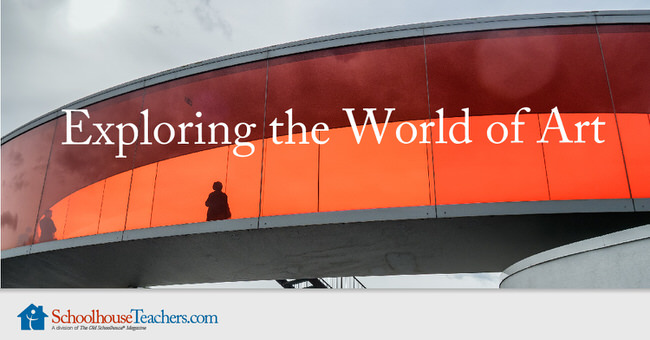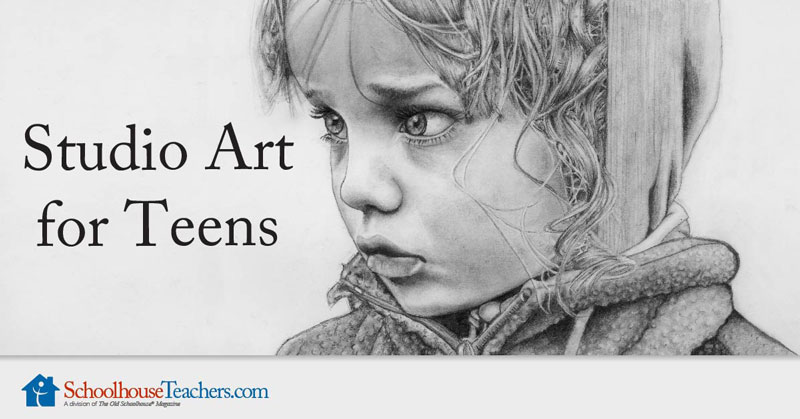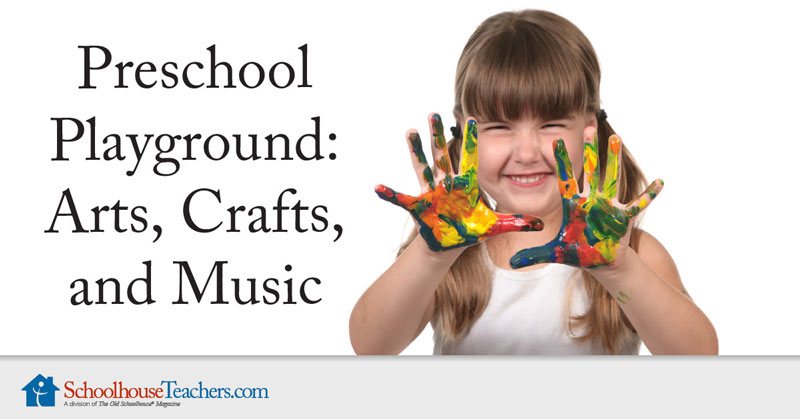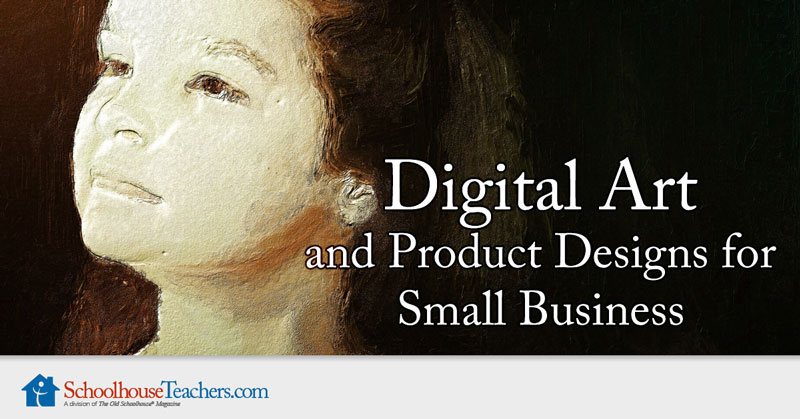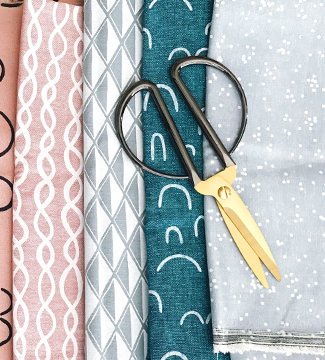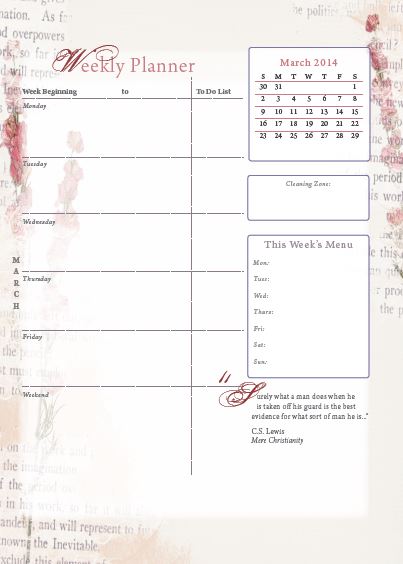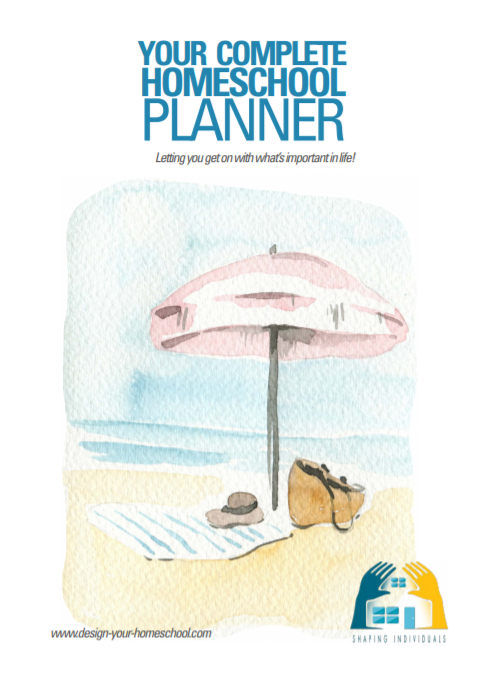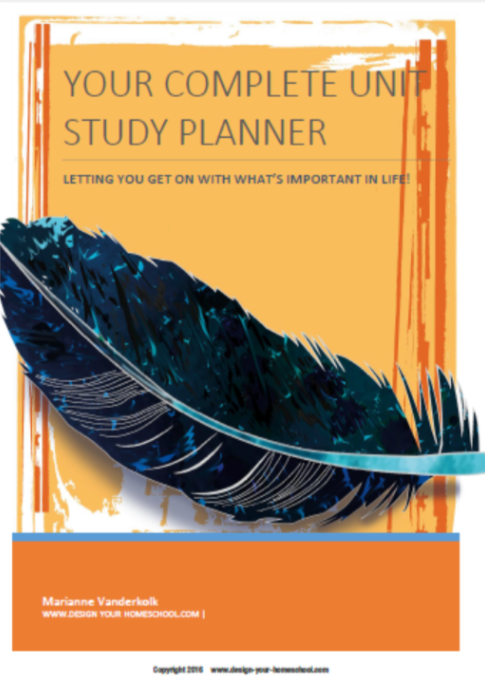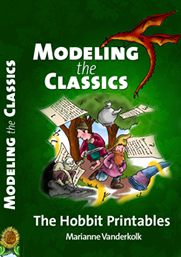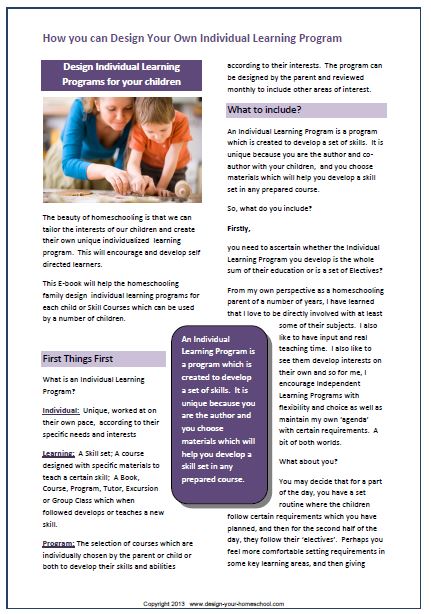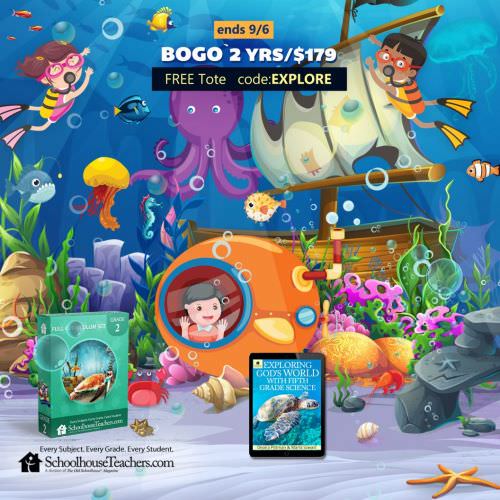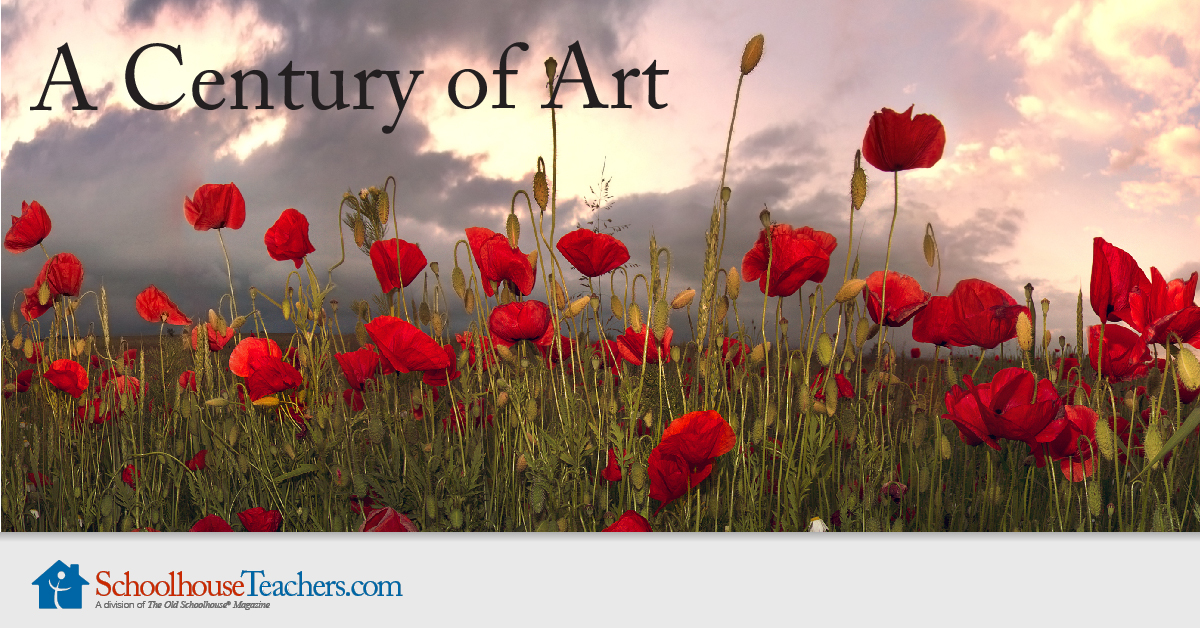Art Techniques to Explore
Let's explore different art techniques!
Art can be a spontaneous way to express what has been learned in any homeschool subject area. As with all homeschooling, give children room and materials, time and some food for thought and it can often flow naturally. However, sometimes plans are needed to help you as a parent direct those art activities, improve them and explore them more fully. Below, I have listed some home school ideas of how to teach Art by Exploring Different Art Techniques.
Designing your own homeschool art curriculum is not difficult to do when you have an idea of the variety of art techniques which you can incorporate and integrate into your homeschool day.
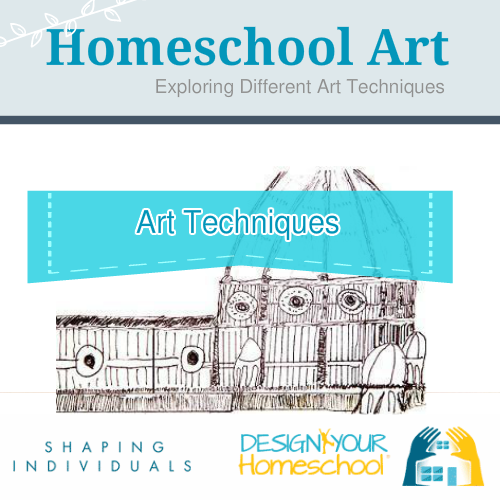
Now explore Art Techniques using:
- Drawing
- Painting
- Working with Paper
- Sculpture and Pottery
- Printmaking
- Computer Art Techniques
- Other Art Techniques
Exploring the World of Art Techniques
This is one of the many courses from SchoolhouseTeachers.com.
For one fee (monthly or per year) your whole family can enjoy these Art courses (plus any other homeschool courses in different subject areas) to create your homeschool art curriculum. There are 12 projects which will introduce you to different mediums and subjects. The art techniques covered are:
- Oil pastels
- Watercolors
- White colored pencil
- Pointillism with acrylics
- Drawing with pencils
- Colored pencils
- Mosaics with paper
- 3D art with cardboard
- Other paper art
Check out the Art Techniques Art Course here.
Drawing - So simple, yet so complex
Drawing is the skill to use lines and shapes to create a pleasing composition which shows depth, contrast, light and shadow and gives the impression of dimension, using different degrees of detail.
Children can:
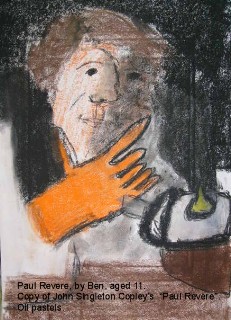
- Draw with pencil, coloured pencils, charcoal, ink pens- still life- focus on lines/ focus on the outside contours/ focus on light and shadows/
- Draw shadows by shading and crosshatching.
- Draw from observation -sketching from nature, people, buildings, cars, action
- Contour Drawings- concentrate on one object, repeat the shape, overlap objects
- Draw with texture- lines to indicate texture. Practice drawing trees, tree trunks, leaves, furry animals. Add more details in the shaded areas.
- Draw using geometric shapes; find shapes in nature; Practice overlapping the shapes.
- Work with light source- using different coloured pencils to show light on one side of an object and shadow on the other; In this context, it is important to learn about complementary colours.
- Learn about perspective- Lines which go back to the horizon line will connect at a "vanishing point".
- Use Two Point perspective to draw a house receding to two vanishing points.
- Use perspective to draw landscapes, roads, train tracks, cars, trucks, shelves; Practice from observation.
- Draw subjects from different viewpoints - drawing a cup and a saucer on a table above your eye level; Draw a tall building, the top is above your eye level; a bird's eye view of a town;
Studio Art Course for Teens - SchoolHouseTeachers
Studio Art for Teens on SchoolhouseTeachers.com presents middle school and high school students with homeschool art lesson plans based on the masters. The first fifteen lessons cover the basics of line, shape, texture, space, color, form, balance, etc. If your student has studied art previously, they can begin at any lesson as they incorporate the skills that were studied in lessons one through fifteen. The lessons are self-contained.
For a monthly subscription, you can access all Art courses - which works out very economically.
Explore different art techniques in Painting
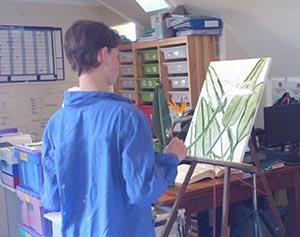
Painting is a way in which children can express their feelings, be creative, develop their observation skills, learn to appreciate the work of great artists' and to critique the way in which artists have expressed themselves using this medium.Using a number of art techniques, children can:
Learn about Value - Art Techniques
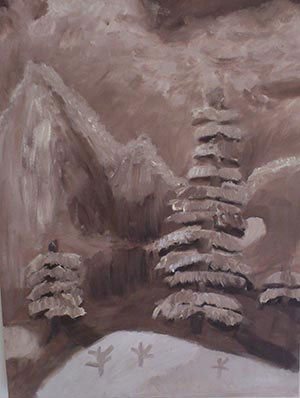
- Learn about value. Make their own monochromatic chart; Start with a primary colour (blue). Paint a blue square; Add a small amount of white to the colour, fill in the next square with the colour;Add more white and continually colour in the squares showing differing values of blue;
- Experiment with monochromatic drawings; Use these above values and paint a still life with only one colour.
Warm and Cool Colours and the Colour Wheel
- Learn about warm and cool colours; Draw two similar pictures and colour one in "cool, sombre" colours, andthe other in bright and cheerful "warm" colours.
- Learn about the colour wheel; Paint the colour wheel; Mix colours and experiment with effects;
- Use mixed media: Use wax crayons with ink/ watercolour/ thinned acrylic paints/
- Use colourful wax crayons on a page; Cover it entirely. Then cover it with tempera paint or India ink. When dry scratch to see the crayons underneath and create a picture.
- Use different brush techniques-
Use Different Brush Techniques
- dry brush (dip the brush in paint and rub in nearly dry on a piece of scrap paper;Then use this "dry brush");
- Stippling (hold a dry brush vertically to create a stipple pattern using paint)
- Brush drawing (Draw with a loaded brush over a part of the painting to give a raised-textured effect)
- Use Powdered paint (to create texture use powdered paint mixed with very little water, or add sawdust or sand and create some rough areas)
- Use a sponge (dip the paint in a sponge or rub the sponge on the painting.
- Use a roller (wrap string around it; roll it in different pools of colour; change directions..
- Experiment with finger painting - thumb paintings (use a print of the child's thumb and make them into characters by adding arms, legs etc; Use fingers or hands and repeat the pattern using various colours; make a collage of handprints;
- Make paper collages or use this art technique on wooden trays as a gift idea.
Working with Paper: Collages, Paper Mache, Models and more
Make Collages and Patterns using Paper
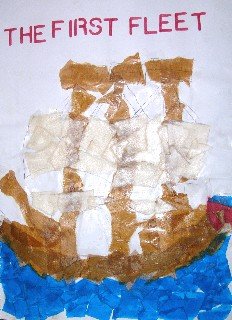
Using Paper Art Techniques, children can:
- use a variety of paper (different thicknesses/shapes/textures- corrugated cardboard, coloured paper, tissue paper, cellophane, transparent paper) and make a torn paper drawing. Can be used across the curriculum -spring pictures/ architecture/ historical themes.
- Make a collage using paper- portraits, landscapes, abstract, silhouettes, houses, animals,
- Make patterns with paper;
Make Paper Sculptures
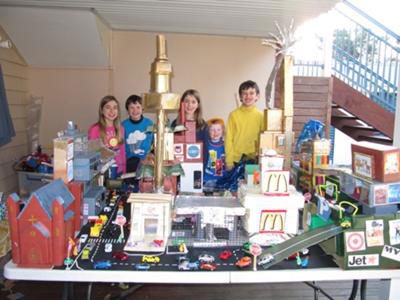
- Make animals using junk materials - spools, boxes, toilet rolls, paper, felt, buttons. Glue,paint and cover with varnish.
- Make an object out of rolled newspaper - cyclindrical shape for the body; tie legs and arms to the body with string; Use strips of newspaper dipped in paste (as paper mache) and wrap around the figure. Paint when dry.
- Make model buildings out of cardboard.
- Make a clay mould, leave to dry; Cover with cooking oil and then cover in newspaper strips dipped in paste (the glue we have used is the wallpaper glue from the hardware); Paint when dry.
- Make forms in space (mobiles)
Paper Mache
Use this paper mache recipe to create all types of sculptures:
- Make paper mache pulp by tearing newspaper into bit and soaking overnight in water.
- Drain the excess water
- Mix with paste (cup paste to 5 cups of pulp)
- Use this to model any shape - fruit, bowls, castles, over balloons or wire
- When dry (can take some time depending on the size), it can be sandpapered, carved, painted and varnished.
Preschool Art Activities - SchoolHouseTeachers
With more than 35 different activities and activity ideas, the Preschool Playground Arts, Crafts, and Music collection can be used to supplement early learning or as part of our complete Preschool Playground curriculum.
Printmaking with various items, techniques and textures
Prints can be made in many ways- monoprinting (making one print by transferring a picture painted on glass or linoleum, onto another page by laying the paper on top of the painting), also can be done with other materials for different effects-
- string/material
- Vegetable and Stick Printing;
- Linoleum and Woodcut Printing;
- fabric printing;
Sculpture and Pottery
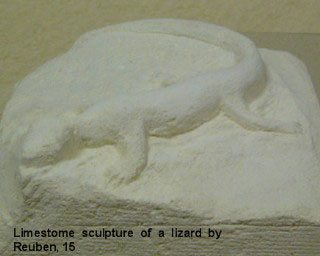
Art technique: Modeling, carving and constructing;
Here children can use clay, wood, plaster of paris, soap to form into three dimensional forms.
Other 3D constructions can be made from wire, straws, and a combination of any re-cycled junk.
Digital Art Techniques
Computer Drawing; 3D computer modelling; Powerpoint presentations, Web Design; Film; Video and film making; See my page on Computer Curriculum ideas and free training from Microsoft.
Digital Art Course - SchoolHouseTeachers
This digital art course introduces students to the world of digital art. With these skills, the world of possibilities opens up to them to work online in any number of fields. The course covers rules governing images, where to find them, how to edit and manipulate images, fonts and word art, logos and banner ads, images for social media branding, product design, and more.
Other Group Art Techniques and Activities
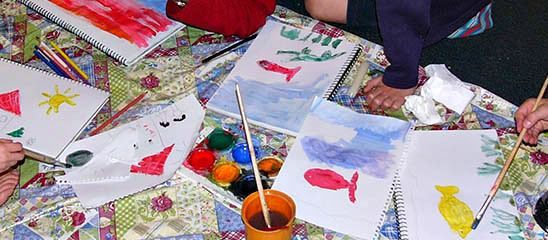
More group art techniques which can be a part of your homeschool art curriculum: Puppetry, Murals using paint, paper, chalk, crayons; Photography, Mosaics- using paper, tiles.
Handcrafts
There are so many things to learn over at Craftsy where you can sign up to numerous amazing video lessons teaching you to sew, bake, decorate cakes, quilt, knit and more.
This is such a wonderful resource for any homeschooler who wants to perfect some handcrafts. So, it doesn't matter if you're not an expert in these fields, because Craftsy is!
Where to from here?
- Ways to Teach Art
- Homeschool Art Resources
- Teach art history using living books
- More Art Lesson Plans - Add yours!
- Home ›
- Ways to Teach Art in your homeschool ›
- Art Techniques
